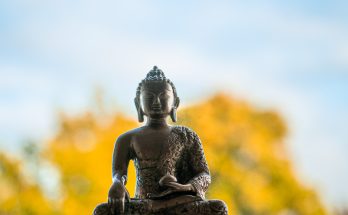- Nepal is home to a unique form of Buddhism known as Newar Buddhism, which is practiced by the Newar people of the Kathmandu valley.
- Newar Buddhism is a blend of Buddhism, Hinduism, and animism, and it is known for its rich tradition of temple worship and religious ceremonies.
- The Swayambhunath Stupa, also known as the Monkey Temple, is one of the most important pilgrimage sites for Newar Buddhists and it is believed to have been built in the 5th century CE.
- The Kathmandu valley is home to many ancient temples, shrines, and palaces that are important to the Newar Buddhist heritage, including the Pashupatinath Temple and the Kathmandu Durbar Square.
- The Newar people have their own unique script known as Prachalit Nepal script, which is used to write the Newar language and is distinct from the scripts used for other languages in Nepal.
- The Newar people have a rich tradition of art and architecture, particularly in their temples, and they are known for their woodcarving, metalworking, and stone carving skills.
- The Newar people traditionally follow a caste-based system known as the “jyapu” system, which is similar to the Indian caste system, but is not as rigid.
- Newar Buddhism has been influenced by Tibetan Buddhism, and there are many monasteries and temples in the Kathmandu valley that reflect the rich Tibetan culture.
- The Newar people have their own unique calendar, which is based on the lunar cycle and is used to determine the dates of festivals and other important events.
- The Newar Buddhist tradition has a strong emphasis on tantric practices and rituals, which are believed to lead to spiritual enlightenment. This include practices such as deity yoga, mandala, mantra, and visualization.
Top 10 facts about Nepalese Buddhism




